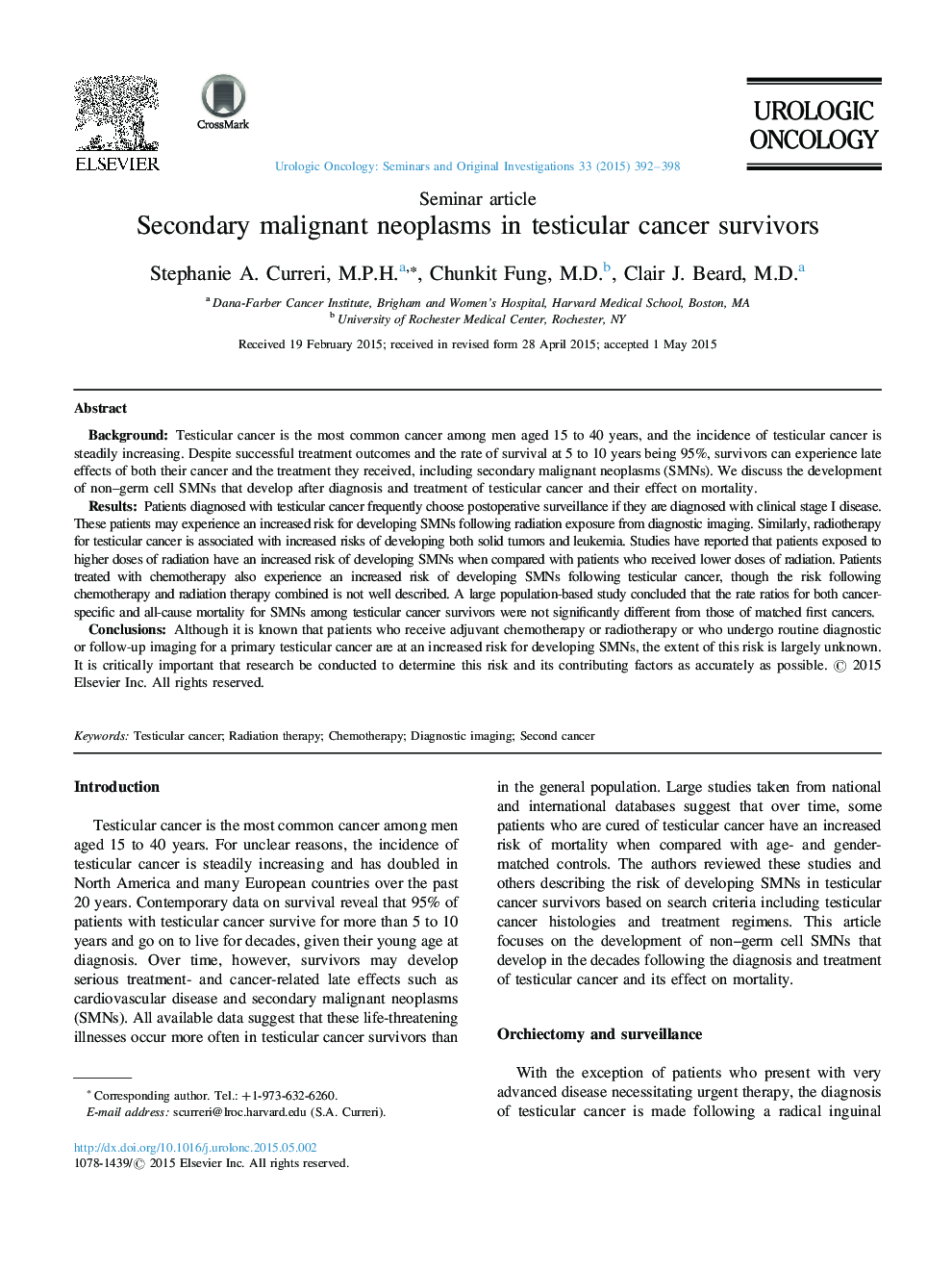| Article ID | Journal | Published Year | Pages | File Type |
|---|---|---|---|---|
| 3999722 | Urologic Oncology: Seminars and Original Investigations | 2015 | 7 Pages |
•We review publications assessing risk of second cancers in testis-cancer survivors.•We evaluate risk of SMN based on treatment type and diagnostic imaging.•The extent of the risk for SMN in testicular-cancer survivors is unknown.•Future research should be aimed at developing guidelines for follow-up care.•Research should be aimed at decreasing the risk of SMN for testis-cancer survivors.
BackgroundTesticular cancer is the most common cancer among men aged 15 to 40 years, and the incidence of testicular cancer is steadily increasing. Despite successful treatment outcomes and the rate of survival at 5 to 10 years being 95%, survivors can experience late effects of both their cancer and the treatment they received, including secondary malignant neoplasms (SMNs). We discuss the development of non–germ cell SMNs that develop after diagnosis and treatment of testicular cancer and their effect on mortality.ResultsPatients diagnosed with testicular cancer frequently choose postoperative surveillance if they are diagnosed with clinical stage I disease. These patients may experience an increased risk for developing SMNs following radiation exposure from diagnostic imaging. Similarly, radiotherapy for testicular cancer is associated with increased risks of developing both solid tumors and leukemia. Studies have reported that patients exposed to higher doses of radiation have an increased risk of developing SMNs when compared with patients who received lower doses of radiation. Patients treated with chemotherapy also experience an increased risk of developing SMNs following testicular cancer, though the risk following chemotherapy and radiation therapy combined is not well described. A large population-based study concluded that the rate ratios for both cancer-specific and all-cause mortality for SMNs among testicular cancer survivors were not significantly different from those of matched first cancers.ConclusionsAlthough it is known that patients who receive adjuvant chemotherapy or radiotherapy or who undergo routine diagnostic or follow-up imaging for a primary testicular cancer are at an increased risk for developing SMNs, the extent of this risk is largely unknown. It is critically important that research be conducted to determine this risk and its contributing factors as accurately as possible.
